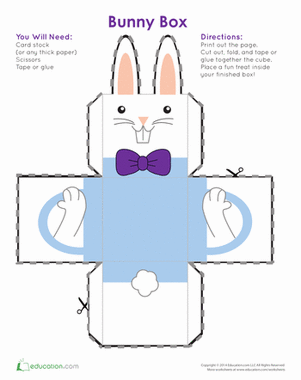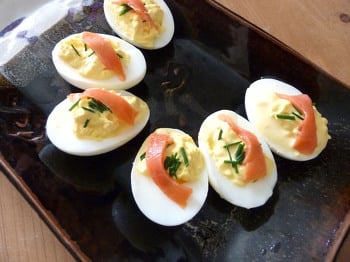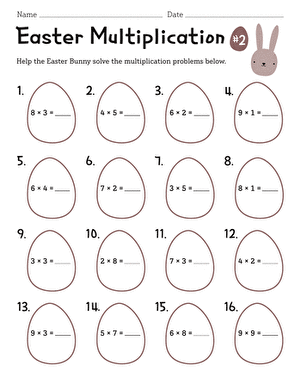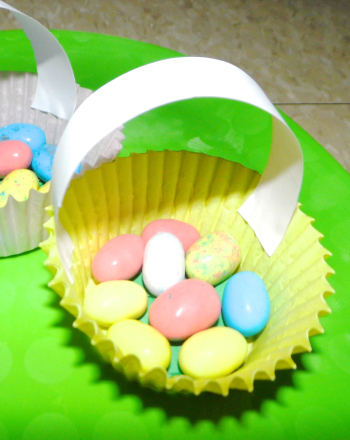Activity
Easter Egg Designs
Around Easter, it’s always fun to see what happens when you mix vinegar with those little tabs of dye and dip in your Easter eggs. There’s fun chemistry in all that for any third grader, but here’s a way to take the learning one step further, and celebrate natural world of springtime ferns. But beware: this activity requires delicate handling. Your third grader can handle most of it—but you'll probably want to be on hand for technical assistance.
Grade
Subject
Thank you for your input.
What You Need:
- One package of commercial Easter egg dyes
- Several small pressed ferns.
- Discarded pantyhose or onion netting bags, cut up
- Glue stick with “repositionable” glue
What You Do:
- Start by taking a nature walk with your child, whether in your yard or in a local natural area which includes ferns. People often assume that ferns are the same, but in fact you can find a wide variety of species, from the delicate “lady fern” to the huge fronds of species such as the Western Sword Fern. Look all around with your child, and bring home a few of your favorite fronds. Invite your child to match the leaves to a nature book to identify types, and to organize them by category as well. Which ferns are smallest? Biggest? Which ones have curly fronds, and which ones stick straight? Then, press them between sheets of plain paper under a big stack of heavy books for about 3-4 days, or until fully flat. If ferns don't grow much in your area, try early spring grasses, or small-leaved spring flowers. They'll work well, too.
- Hard boil 8-12 eggs and cool them off.
- Use the repositionable glue to fasten down your pressed foliage onto your eggs. You'll want to be careful here--don't press too hard with the glue stick, or you'll break the shell; and be gentle with the pressed, dried flowers. When you're done placing the leaves on the egg, wrap each egg in a little protective “basket” made either from an onion netting bag or a discarded, cut up pair of pantyhose, fastened at the top with a twist-tie.
- Mix the commercial Easter egg dyes into individual egg dying cups, following instructions on the box. Dip an egg into each color, again following directions.
- When the egg is ready, pull it out of the dye and remove the netting. While the egg is still damp (but after it has stopped dripping), pull off the dried leaves. You will see a delicate white design where leaves were glued on—a beautiful, artistic reminder of the magnificent variety of patterns in the natural world. Once the egg has dried fully, you can peel off any remaining bits of glue, which will be dry and flaky. Place your eggs in a basket and savor them this holiday season!
Related learning resources

Easter Egg Holder
Worksheet
Easter Egg Holder
Protect your precious egg hunt plunder with this Easter egg holder craft.
3rd grade
Arts & crafts
Worksheet

Creative Writing Prompt: The Best Easter Egg
Worksheet
Creative Writing Prompt: The Best Easter Egg
In this creative writing worksheet, learners will use their imagination to dream up, write about, and draw an extra-special Easter egg.
3rd grade
Reading & Writing
Worksheet

Easter Word Scramble
Worksheet
Easter Word Scramble
In this playful puzzle, learners will re-order the letters in each egg to reveal the Easter-related word hidden inside.
3rd grade
Worksheet

Easter Deviled Eggs
Activity
Easter Deviled Eggs
Use up your leftover hardboiled Easter eggs with our healthy, gourmet variations on an old classic: deviled eggs
3rd grade
Activity

Easter Multiplication #2
Interactive Worksheet
Easter Multiplication #2
Help the Easter Bunny by solving the multiplication problems hidden inside the Easter eggs!
3rd grade
Math
Interactive Worksheet

Easter Multiplication #5
Interactive Worksheet
Easter Multiplication #5
Help the Easter Bunny by solving the multiplication problems hidden inside the Easter eggs!
3rd grade
Math
Interactive Worksheet

Easter Multiplication #3
Interactive Worksheet
Easter Multiplication #3
Help the Easter Bunny by solving the multiplication problems hidden inside the Easter eggs!
3rd grade
Math
Interactive Worksheet

Easter Multiplication #4
Interactive Worksheet
Easter Multiplication #4
Help the Easter Bunny by solving the multiplication problems hidden inside the Easter eggs!
3rd grade
Math
Interactive Worksheet

Easter Multiplication #1
Interactive Worksheet
Easter Multiplication #1
Help the Easter Bunny by solving the multiplication problems hidden inside the Easter eggs!
3rd grade
Math
Interactive Worksheet

Get Descriptive on Easter
Lesson plan
Get Descriptive on Easter
Easter is a special holiday for many families, and kids enjoy traditions such as decorating their Easter eggs.
3rd grade
Reading & Writing
Lesson plan

Felt Egg
Activity
Felt Egg
each some early sewing skills with this cute felt egg project that can be reused as a silly gift, a toy for younger siblings, or a doll accessory.
3rd grade
Arts & crafts
Activity

Mini Easter Baskets
Activity
Mini Easter Baskets
Instead of pulling out the usual Easter decorations, have your child transform cupcake liners into mini Easter baskets.
3rd grade
Arts & crafts
Activity



